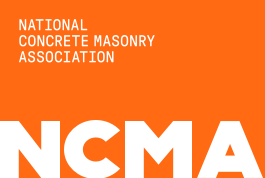High strength steel in structural masonry
The trend towards the use of higher grades of steel reinforcement is not new but dates back many decades, when Grade 60 bars entered the market and started replacing Grade 40 bars. Nowadays, Grade 40 bars are rarely manufactured as Grade 60 has become the most widely used steel grade in the United States. It appears this trend is continuing with the increasing availability of reinforcement of higher grades, making it imperative that the masonry industry be able to adapt, should the steel industry respond to the trend by producing more high strength reinforcement and less Grade 60 reinforcement.
Adopting high strength steel reinforcement will broaden the masonry design options available to engineers and may enhance the competitiveness of masonry in the construction market. However, the lack of analytical and experimental evidence combined with code limitations are currently restraining engineers from using high strength steel reinforcement in masonry design. For example, TMS 402-16 8.3.3.1 specifies a maximum allowable stress of 32,000 psi with reference to Grade 60 steel reinforcement. In strength design, flexural reinforcement is limited to rebar strength of 60,000 psi according to TMS 402-16 9.1.9.3. The goal of this project is to make a leap forward that will enable the use of high strength steel reinforcement in masonry design. For this purpose, a study is conducted to understand the use of high strength steel, in terms of material savings, constructability, and considerations in the masonry design.
Presentations:
The Masonry Society Fall Meetings (2025). “Raising Code Limits on Specified Reinforcement Strength by Adoption of High-Strength Steel Bars (HSRBs) In Structural Masonry.”
Publications:
Student Assistants:
Waleed Khan, PhD Student
Samvid Parajuli, PhD Student
Omar Khalid, MSc Student (Graduated)
George Shenouda, Undergraduate Student (Completed service)
Funded by
Concrete masonry wall - Direct pull out test
Industry Advisor:
John Hochwalt, PE, SE, Director of Engineering for Seattle Structural, KPFF Consulting Engineers
Clay brick wall - Direct pull out test


